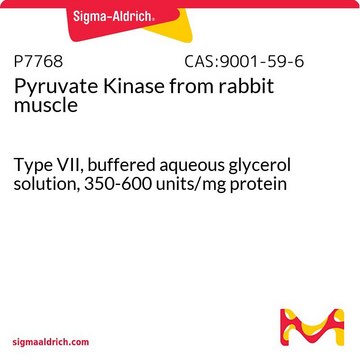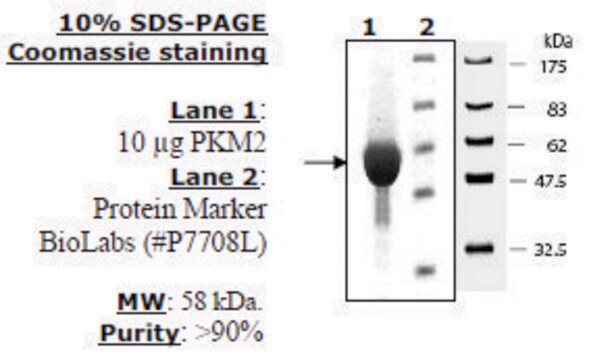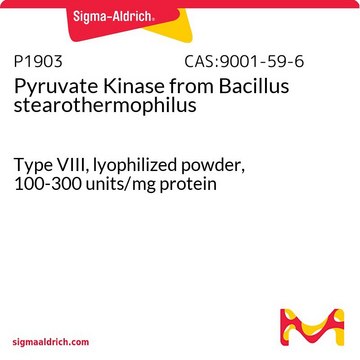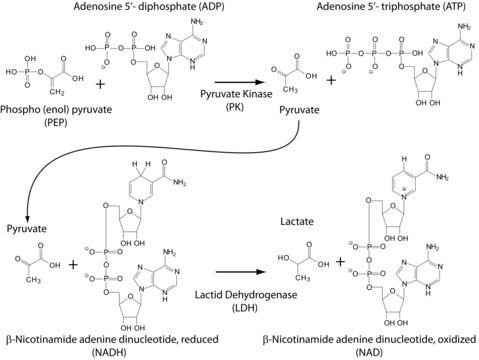SAE0021
Pyruvate Kinase M2 human
recombinant, expressed in E. coli, specific activity ≥100 unit/mg protein
Sinónimos:
Cytosolic Thyroid hormone-binding protein (CTHBP), M2-PK, OPA-interacting protein 3 (OIP-3), PKM2, Pyruvate kinase 3 (PK3), Pyruvate kinase muscle isozyme, p58
About This Item
Productos recomendados
recombinante
expressed in E. coli
Nivel de calidad
Formulario
lyophilized powder
actividad específica
≥100 units/mg protein
Condiciones de envío
ambient
temp. de almacenamiento
−20°C
Descripción general
Aplicación
Acciones bioquímicas o fisiológicas
Definición de unidad
Forma física
Código de clase de almacenamiento
11 - Combustible Solids
Clase de riesgo para el agua (WGK)
WGK 2
Punto de inflamabilidad (°F)
Not applicable
Punto de inflamabilidad (°C)
Not applicable
Elija entre una de las versiones más recientes:
Certificados de análisis (COA)
¿No ve la versión correcta?
Si necesita una versión concreta, puede buscar un certificado específico por el número de lote.
¿Ya tiene este producto?
Encuentre la documentación para los productos que ha comprado recientemente en la Biblioteca de documentos.
Los clientes también vieron
Nuestro equipo de científicos tiene experiencia en todas las áreas de investigación: Ciencias de la vida, Ciencia de los materiales, Síntesis química, Cromatografía, Analítica y muchas otras.
Póngase en contacto con el Servicio técnico







